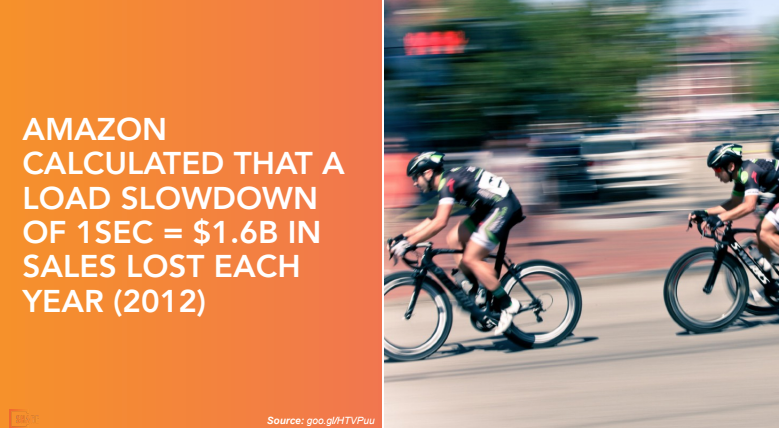Digital marketers gathered in Chicago last week for Share17, an event hosted by SEO and content marketing platform BrightEdge.
Share17 provided a welcome opportunity to take stock of where the industry stands, discuss common challenges marketers are facing, and consider the upcoming trends we should all aim to capitalize on.
The agenda for the day reflected this, through a combination of guest speakers, customer panels, and plenty of revelations about search marketing trends. The below is a recap of the key themes and SEO tips we took away from the event.
The convergence of SEO and content marketing
The key theme for the day was the convergence of SEO and content marketing, although there were also discussions on how SEO impacts all areas of modern businesses.
97% of BrightEdge customers state that SEO and content marketing are either merging or have already done so. As a result, the focus shifts to the more pragmatic matters of how this plays out at companies both large and small. At a conceptual level, there is widespread understanding of the interplay between the disciplines, but at a practical level there is still some work to do.
Although content marketing has grown to become a $75 billion industry, each piece of content needs a lot of help if it is to cut through in such a crowded market. In fact, research from BrightEdge revealed:
- 50% of B2B content draws some engagement from its intended audience. The other 50% receives no visits or shares.
- The picture is bleaker still for B2C content, with only 20% engaging consumers. The vast majority of B2C content is simply never seen.
SEO can help here, of course, but it is clear that something is amiss at a broader scale. The content marketing industry has not aligned demand with supply if so much of its output fails to resonate with even a small audience.
Scott Mowery from Cleveland Clinic had some tips to help ensure that content is created with conviction. Without that dedication of attention and resources, it is highly likely that the audience will not engage when so many other options are available.
Scott used the acronym C.O.P.E. (Create Once, Promote Everywhere) to distil his team’s philosophy, and it is one that is reaping dividends so far.
The core idea here is to make sure that there is a clear purpose behind every piece of content created and that it is of the highest possible quality. Then it can be repurposed for different media formats and delivered to an audience through a focused amplification plan. With a projected 110 million visits in 2017, this plan seems to be working for Cleveland Clinic.
SEO is very closely aligned to business strategy
Throughout the day, there were nods to the prominent position SEO has assumed within businesses due to its ties with content marketing. This is due to the fact that content sits at the center of marketing plans, while marketing channels are ways of promoting this message and directing traffic towards content.
SEO is a fusion of medium and message, as it is simply impossible to rank in competitive industries without creating something of value that appeals to an audience.
Working in SEO in 2017 therefore requires a broad range of skill sets, from the technical through to the strategic and the interpersonal. Frankly, SEO fails if it exists in a vacuum and it requires input from across departments to reach its full potential.
Guest speaker John Hall had an interesting take on what this means for the career prospects of SEOs. He said that he sees more SEO professionals take up senior leadership positions than ever before, based on their ability to view business problems from a range of angles.
The changing nature of SEO has made it hard to pin down with concrete definitions, but that fluidity also creates marketers that are adept at managing the complexities of the modern business landscape.
SEO professionals need to have influence, both internally and externally, to get this message across.
John Hall shared some fascinating insights into the psychology of influencing people, whether within a company or when communicating with customers. His presentation revealed the importance of making a genuine emotional connection with people to stay top of mind in the long term. That brings with it a certain vulnerability, but it is imperative if we are to gain the trust of our audience.

Some of this may feel very intuitive, so it is therefore worth asking why we fail to make these connections more frequently. A narrow focus on gaining short-term ROI restricts the potential for brands to make emotional connections over time, but the most profitable brands achieve exactly this aim.
Such campaigns have typically been the domain of brand marketers but as media spend continues to move online, there should be a seat at the table for SEO too.
Consumers are in control
In the age of cord-cutters and ad blockers, the message for brands is clear: consumers are in control. 28% of US Internet users used ad blockers this year, as the digital advertising industry struggles to balance monetization with user experience.
This dynamic is playing out with particular significance on mobile devices, where consumer expectations continue to heighten. BrightEdge research found that 79% of results for the same query differ across mobile and desktop devices.
Concurrently, the growth in queries containing the phrase ‘near me’ is slowing. This is driven by implicit intent; users are coming to expect that Google knows where they are and will tailor the results accordingly without direction.
From Google’s perspective, the core focus now is on speed. To keep consumers in the Google search ecosystem on mobile, it is essential to provide an app-like experience via search results pages.
We have seen this recently with developments like AMP and app indexation, but there is still a sense that marketers need to place more emphasis on providing a faster digital experience. 82% of smartphone users consult their phones while in a store deciding what to buy, so every second of extra load time can be costly.
In fact, as Eugene Feygin from Quill.com discussed, Amazon has calculated that an extra second of load time across their site would result in $1.6 billion in lost revenue per annum.
This creates a multitude of moments of need or want throughout each day, with the average user now spending 2 hours per day on a mobile device. The approach of applying broad demographic groups or personas is no longer fit for purpose if we want to put consumers first.
A more accurate and profitable approach understands the importance of being in the right place when people need information. That consumer journey will differ by brand and by industry; the companies that prosper over the next few years will comprehend this and plan their content marketing accordingly.
 This provides a robust structure to an SEO campaign, driven by genuine consumer demand. That structure needs to be populated with content that connects, however, and this is where we should recall the lessons learned from John Hall’s presentation. It is only by investing ourselves in our content that we will provide something of value that stands out in such a competitive landscape.
This provides a robust structure to an SEO campaign, driven by genuine consumer demand. That structure needs to be populated with content that connects, however, and this is where we should recall the lessons learned from John Hall’s presentation. It is only by investing ourselves in our content that we will provide something of value that stands out in such a competitive landscape.
Throughout the day, there was a sense of this being an exciting moment for the SEO industry, but also one that requires a strategic mindset to comprehend and capitalize on so many diverse areas of activity.
Scott Mowery from Cleveland Clinic shared a helpful mantra that his team goes by to keep efforts focused in what is an increasingly complex market. If an initiative is not digital, mobile and measurable, don’t do it.
This seems an apt summary of the core themes from Share17 in Chicago, and sage advice for all search marketers.
source https://searchenginewatch.com/2017/10/12/share17-chicago-the-key-themes-and-trends/


No comments:
Post a Comment